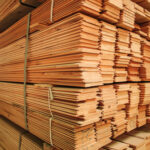 Planning a DIY project with lumber can be an exciting endeavor, but accurately estimating how much lumber you’ll need can be a challenge. Mistakes in estimating can lead to unnecessary expenses, delays, and frustration. In this blog, we will discuss some helpful tips to assist you in accurately estimating your lumber needs for your project.
Planning a DIY project with lumber can be an exciting endeavor, but accurately estimating how much lumber you’ll need can be a challenge. Mistakes in estimating can lead to unnecessary expenses, delays, and frustration. In this blog, we will discuss some helpful tips to assist you in accurately estimating your lumber needs for your project.
1. Measure Twice, Cut Once:
One of the golden rules in the world of woodworking is to measure twice and cut once. This rule is equally important when it comes to estimating lumber needs. Take accurate measurements of the length, width, and height of the areas where you will be using lumber. Ensure you account for any irregularities in the shape of the project area, such as corners or angles. By getting accurate measurements, you are less likely to end up with either too little or too much lumber.
2. Create Detailed Project Plans:
Before you rush into buying lumber, it is crucial to have detailed project plans in place. These plans shouldn’t merely outline the design and dimensions of your project but also include a list of materials required, including the types and sizes of lumber needed. By having a comprehensive plan, you will be able to estimate the amount of lumber required for each specific part of your project.
3. Research Typical Lumber Sizes:
Understanding the typical sizes of lumber available and commonly used can help you estimate more accurately. Lumber sizes can vary depending on the region, so research the standard sizes available in your area before making any assumptions. By knowing the sizes available, you can better plan and calculate how many pieces of lumber you’ll need.
4. Consider Waste and Overages:
When estimating lumber needs, it’s important to factor in waste and overages. Waste occurs due to irregular shapes, flawed pieces, or errors made during cutting. It is recommended to add an extra 5-10% of lumber to your estimates to account for waste. Additionally, including an overage of 10-15% can help you avoid running short on lumber if any mistakes occur during the project.
5. Make a List of Materials:
To keep track of your estimates, create a list of all the materials needed for your project. Include everything from lumber to fasteners, adhesives, and finishing materials. Having a comprehensive list will not only help you stay organized but also ensure that you don’t overlook any essential materials required for your project.
6. Consult with Professionals:
If you’re new to estimating lumber needs or unsure about your calculations, don’t hesitate to consult with professionals. Experienced woodworkers, contractors, or even staff at your local lumberyard can provide valuable insights and guidance in accurately estimating your lumber needs. They can offer advice on the quantity and type of lumber required based on your project plans and provide tips to avoid wastage.
7. Keep Track of Previous Projects:
If you have completed similar projects in the past, take note of the amount of lumber you used. This can act as a reference point for future projects, helping you avoid the potential pitfalls of under or overestimating. Keeping a record of your previous projects can be an invaluable resource for estimating lumber needs accurately.
8. Calculate Square Footage:
For projects involving large surfaces like decks, fences, or flooring, calculating the square footage can assist you in estimating lumber needs. Measure the length and width of the surface and multiply the two measurements to get the square footage. By knowing the square footage, you can determine the number of boards required based on their width.
Summary
Accurately estimating lumber needs is an essential skill for any DIY enthusiast or woodworker. By following these tips, you’ll be better equipped to estimate the right amount of lumber for your project, avoid unnecessary expenses, and ensure a smooth and successful build. Remember, careful planning and thoughtful calculations are key to a well-executed woodworking project.
Need a Hardware Store in Seattle, WA?
Since 1926, Stewart Lumber & Hardware Co. located in Seattle, WA has been offering a superior selection of top quality products to contractors, remodelers, and homeowners. We stock a large variety of building products including lumber, plywood sheetrock, insulation, composite decking, hardware, concrete mix, siding, paint and supplies, tools, and so much MORE! If you don’t find what you’re looking for then let us know and we can place custom orders. Contact us today to learn more about what we can do for you!